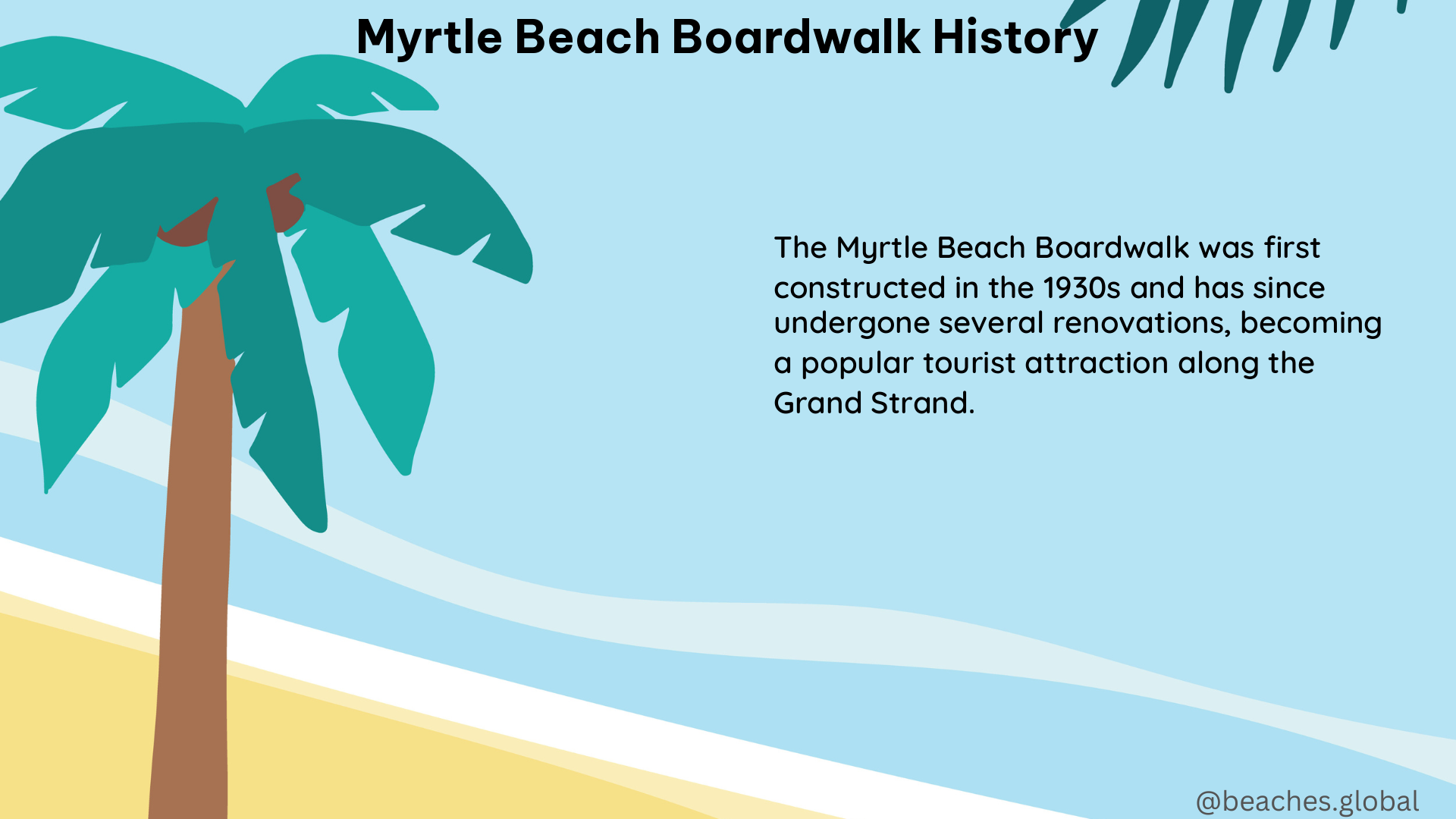The Myrtle Beach Boardwalk, a beloved landmark in South Carolina, has a rich and captivating history that spans decades. From its humble beginnings in the 1930s to its recent revitalization, this iconic attraction has evolved to become a must-visit destination for tourists and locals alike.
The Origins of the Myrtle Beach Boardwalk
The original Myrtle Beach Boardwalk was constructed in the 1930s, during the early days of the city’s development as a tourist destination. This wooden walkway quickly became the focal point of the growing community, attracting visitors from near and far to enjoy the sights, sounds, and activities along the coast.
The Destruction and Reconstruction

In 1954, the Myrtle Beach Boardwalk faced a devastating blow when it was destroyed by Hurricane Hazel, a powerful storm that left a trail of destruction in its wake. Undeterred, the city set out to rebuild the boardwalk, this time using a more durable concrete-based design that would withstand the elements.
The Revitalization of the Myrtle Beach Boardwalk
In 2006, the city of Myrtle Beach voted to invest $6.4 million in upgrading the boardwalk, a project that took nearly three years to complete. The new and improved Myrtle Beach Boardwalk, which opened in the summer of 2010, spans 1.2 miles from Pier 14 in the north to Second Avenue Pier in the south, offering a wealth of attractions and amenities for visitors to enjoy.
Attractions and Amenities
Today, the Myrtle Beach Boardwalk is home to a variety of attractions, including the Myrtle Beach SkyWheel, Pier 14, Second Avenue Pier, Ripley’s 5D Theater, and Ripley’s Haunted Adventure. Visitors can also find a range of beachwear shops, souvenir shops, and restaurants, as well as thrilling rides like the Myrtle Beach Zipline Adventures & Adrenaline Matrix, The Skyscraper, and The Slingshot.
Rules and Regulations
The Myrtle Beach Boardwalk has a set of rules and regulations that visitors must follow. Dogs are allowed on the boardwalk with a leash 7 feet or shorter, but only during certain times of the year. Bicycles are also permitted, but again, with specific time restrictions. Skateboards, roller skates, and roller blades are prohibited on the boardwalk.
Parking and Accessibility
Visitors to the Myrtle Beach Boardwalk have several options for parking, including pay-to-park lots near the boardwalk and the Pavilion Parking Garage, which is within walking distance. The boardwalk itself is open 24 hours a day, 7 days a week, making it accessible to visitors at any time.
Conclusion
The Myrtle Beach Boardwalk is a true gem of the South Carolina coast, with a rich history and a wealth of attractions and amenities to explore. Whether you’re a first-time visitor or a seasoned local, this iconic destination is sure to captivate and delight, offering a unique and unforgettable experience for all who venture along its winding path.
References:
– History of the Myrtle Beach Pavilion
– The Myrtle Beach Boardwalk
– Myrtle Beach Boardwalk Frequently Asked Questions
– The Myrtle Beach Boardwalk is a Must-See Attraction, But Just How Long is It?
– Myrtle Beach Boardwalk
